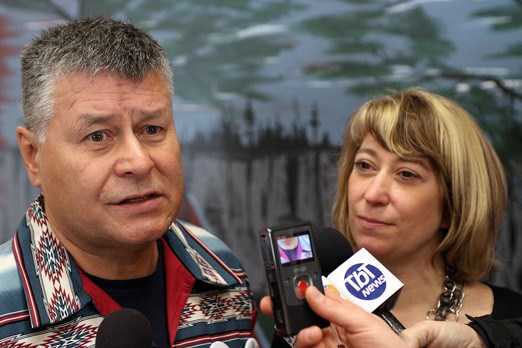Ontario’s Aboriginal advisor says the province may have to overlook some of its own regulations to keep displaced Aboriginal children in their own communities.
John Beaucage said deplorable conditions do exist in remote First Nations, but the importance of having friends and family nearby must be factored in decisions made by the Children’s Aid Society.
Sometimes a friendly face outweighs all other factors, he said.
“Many First Nation houses do not meet those minimum requirements and there are not a lot of native foster homes on the reserves,” Beaucage said Monday, a key speaker at the Fort William First Nation-hosted Aboriginal child welfare summit.
“So what happens is when a child is apprehended for whatever reason, then there’s no place to put them and they’re taken off and put in non-native foster homes. While I see that as a requirement to make sure they’re safe, I also see we need to do some changes in terms of foster homes and linking it with kinship care and with customary care.”
This means a new way of governing the foster care system, at least when it comes to First Nation’s youth.
“If you have a loving home and you have grandparents or aunties or uncles who can look after the children, but say their house doesn’t meet the minimum requirements, I think you first look at the loving home rather than the physical attributes of the home,” Beaucage said.
According to a ministry of children and youth services spokeswoman, three per cent of the province’s children are Aboriginal.
However, 17 per cent of the children involved in the child welfare system are Aboriginal.
Fort William First Nation Chief Peter Collins, who in the past has flown to Toronto in an attempt to stop native children from being adopted out of his community, said keeping kids close to home is important to their upbringing and for heritage preservation.
“It’s all about our culture, our traditions and our languages, trying to build that back and establish those values with our kids. They’re our assets to our future and if we start losing our kids to mainstream society or wherever and we don’t see them again that doesn’t (help) build our community,” Collins said.
But Minister of Children and Youth Services Laurel Broten said dumping money on the problem isn’t the answer.
The conversation, she said, is to question the pathways going forward and ask what needs the most attention. If, for example, it’s prevention and mental health, then efforts should be geared toward those areas.
Hence the conference, which wraps up on Tuesday.
“These next two days are really an opportunity for us to listen and learn and then roll up our sleeves and get to work on some of the key issues facing Aboriginal First Nation’s children, youth and families across the province,” she said. “It’s an opportunity for us to look at issues like customary care, prevention, best practices and share the learning.”
Sign in or register
- Messages
- Post a Listing
- Your Listings
- Your Profile
- Your Subscriptions
- Your Likes
- Your Business
- Support Local News
- Payment History
Registered Users
Already have an account?
New Users
Create a free account.
